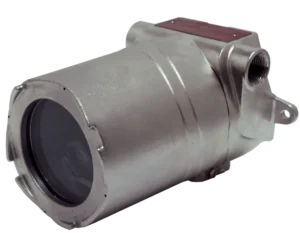When it comes to safety in hazardous environments, Intrinsically safe cameras are often the go-to solution. These devices, available from leading suppliers like Intrinsically Safe Store, are designed to prevent ignition in potentially explosive atmospheres. However, while they offer significant benefits, it’s crucial to understand their limitations. In some situations, these cameras may not be enough to ensure complete safety. Let’s delve deeper into this topic.
What Are Intrinsically Safe Cameras?
Intrinsically safe cameras are specially designed devices that limit electrical and thermal energy output to prevent ignition in hazardous environments. They are commonly used in industries such as oil and gas, mining, and chemical processing, where the risk of explosion is high.

Limitations of Intrinsically Safe Cameras
Despite their benefits, intrinsically safe cameras have certain limitations that users must be aware of:
- They do not eliminate the risk of ignition completely. While they reduce the risk, other factors, such as human error or equipment malfunction, can still lead to accidents.
- They are not suitable for all types of hazardous environments. The effectiveness of these cameras depends on the specific conditions of the environment, such as the type and concentration of the explosive atmosphere.
- They require regular maintenance and inspection to ensure their safety features are functioning correctly. Neglecting this can lead to a false sense of security.
Case Study: The Deepwater Horizon Disaster
The Deepwater Horizon oil spill in 2010 is a prime example of when intrinsically safe cameras were not enough. Despite the use of these cameras, a series of equipment failures and human errors led to one of the largest environmental disasters in history. This incident underscores the importance of comprehensive safety measures beyond just using intrinsically safe cameras.
Enhancing Safety with Additional Measures
Given these limitations, it’s crucial to implement additional safety measures. These may include:
- Regular training and education for employees to understand the risks and safety procedures in hazardous environments.
- Regular inspection and maintenance of all equipment, not just the Intrinsically Safe Cameras.
- Implementing a comprehensive safety management system that includes risk assessment, emergency response planning, and continuous monitoring.
Optimizing Safety: Understanding the Limits of Intrinsically Safe Cameras
Intrinsically safe cameras are a valuable tool for enhancing safety in hazardous environments. However, they are not a panacea. Understanding their limitations is crucial to ensuring comprehensive safety measures. By combining these cameras with other safety practices, industries can significantly reduce the risk of accidents in hazardous environments.
For more information on intrinsically safe cameras and other safety equipment, visit Intrinsically Safe Store. Our team of experts is ready to help you find the right solutions for your specific needs. Contact us today to learn more.


